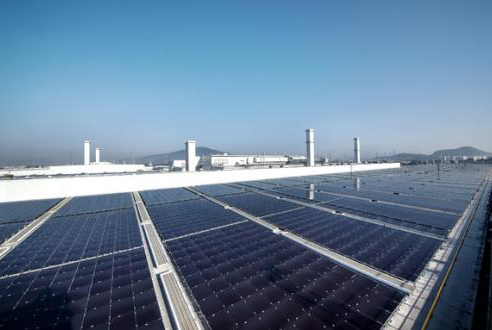 |
分布式光伏发电工程点击次数:2564
发布时间:2017-11-24 08:31:18 |
|---|
Distributed photovoltaic power generation is a distributed power generation system that directly uses photovoltaic modules to convert solar energy into electrical energy. It is a new type of power generation and comprehensive energy utilisation with broad development prospects. It advocates the principle of nearby power generation, nearby grid connection, nearby conversion, and nearby use. It can effectively improve the power generation of photovoltaic power plants of the same scale and effectively solves the problem of power loss in boosting and long-distance transportation.
Distributed photovoltaic power generation has the following characteristics:
1. Government promotion and support projects.
"Implementation Opinions of the General Office of the People's Government of Guangdong Province on Promoting the Healthy Development of the Photovoltaic Industry" (Yuefuban [2014] No. 9), Dongguan Development and Reform issued the "Opinions on Further Accelerating the Development of Distributed Photovoltaics in Our City" and other documents and relevant national photovoltaics Power generation promotion documents boost the construction of distributed photovoltaic power generation projects in industrial parks.
Second, the pollution is small, and the environmental protection benefits are outstanding.
In the process of power generation, distributed photovoltaic power generation projects will not generate any waste, have no pollution, noise and other public hazards, and have no adverse impact on the environment. It is an ideal clean energy source.
3. To a certain extent, it can relieve the local electricity tension.
The distributed photovoltaic power generation system can partially relieve electricity shortages during peak electricity consumption periods or in industrial parks with large electricity consumption.
4. It can be used by itself, effectively reducing the electricity cost. The surplus electricity is connected to the grid and has high investment efficiency.
During the day, the electricity is generated for self-use. The surplus electricity is sold to the power grid, which effectively reduces the electricity consumption at high-order and peak points. The cost can be recovered in a few years, and the next 20 years will be all profits. Since then, no electricity bills will be paid, and electricity will continue to be produced. The state has introduced a series of policies and measures to promote the development of photovoltaic power generation, and photovoltaic power generation equipment can enjoy national engineering application subsidy funds and electricity price subsidies.
5. Simple operation and maintenance
The distributed photovoltaic power generation system has no moving parts, is not easily damaged, and is easy to maintain, especially suitable for unattended use.
The distributed photovoltaic power generation grid-connected system is mainly composed of the following parts:
A. Solar cell module B. Grid-connected inverter C. Switchboard D. Two-way meter E. Public grid and other components.
A. Solar cell module: It is the core component in the photovoltaic system, and its function is to convert solar energy into electrical energy.
B. Grid-connected inverter: A device that converts direct current into alternating current. Since the electrical energy converted by photovoltaic modules is direct current, and in actual use, most of the loads are alternating current loads, this device is required to convert direct current to alternating current for use by the load.
Distributed photovoltaic power generation application scenarios:
电话:0769-89789800
邮件:sales@gdwintech.com